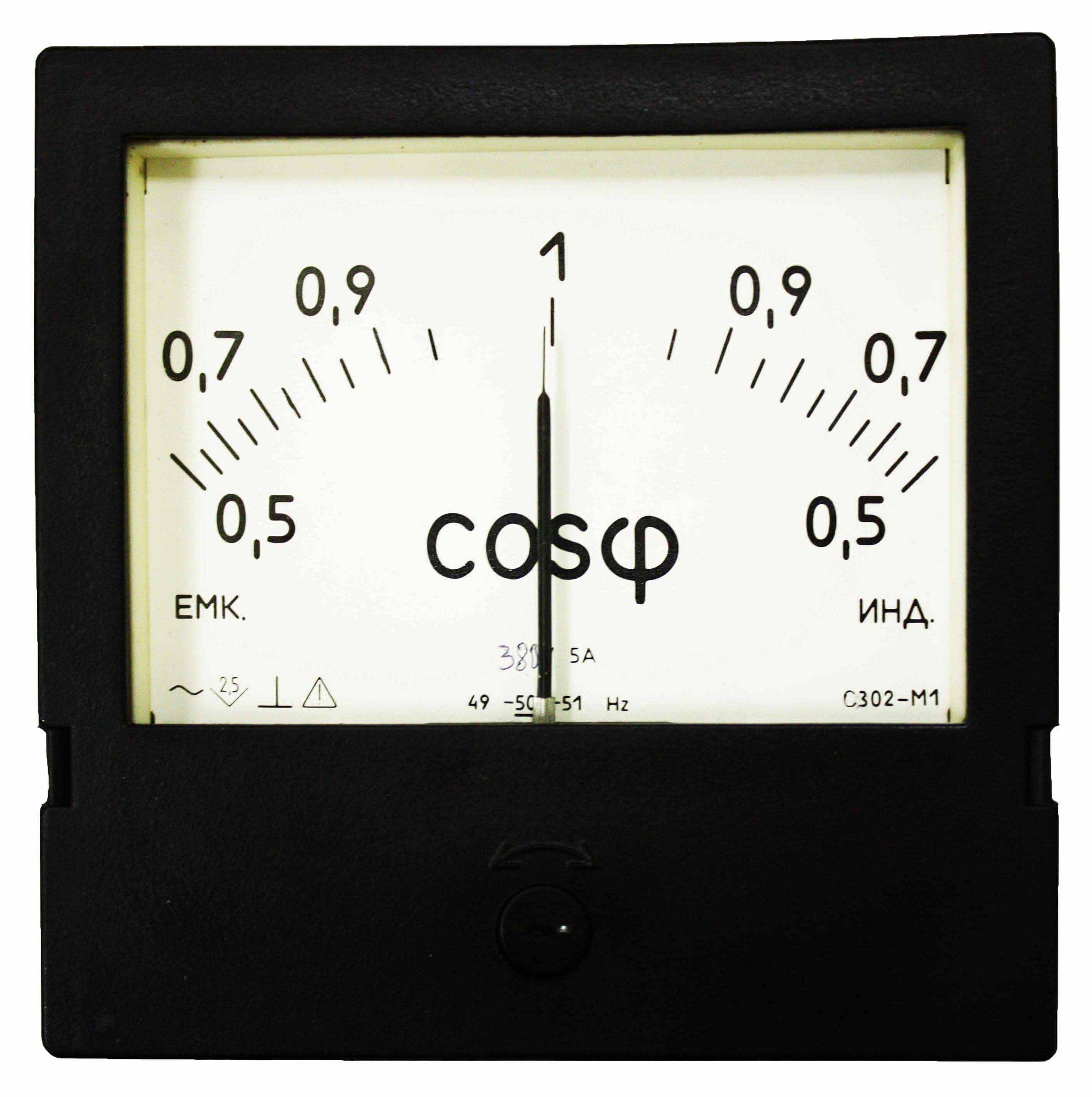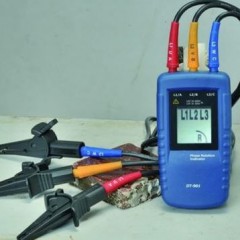What is a phase meter and how to use it?
Briefly about the phase meter
When the device is included in the measurement circuit, it is connected simultaneously to the current and voltage circuits. If it is necessary to work with networks having three voltage phases, then the device is connected simultaneously to all these phases in voltage. The current connection is made to the secondary windings of the transformer.
The device uses a simplified wiring diagram. Therefore, it will not be difficult to figure out for yourself the purpose of the phase meter. The current connection is carried out in two phases, so the third phase is determined based on the addition of vectors of only a pair of currents (meaning measured phases). Also, the purpose of the phase meter is to measure the power factor. This device in simple language is also referred to as a cosine meter.
At the moment, there are two types of phase meters, the scope of which is to determine the power factor. It is a digital and electrodynamic device. Let's consider them in more detail.
Electrodynamic
The electrodynamic phasometer is often referred to as electromagnetic. The design of this type of meter is based on a simple circuit with a ratiometric mechanism, which allows phase shift measurements. This phasemeter has a pair of frames rigidly connected to each other. Between them there is an acute angle equal to 60 degrees. The frames are mounted on the axes, which are fixed in the bearings, so the opposing moment of a mechanical nature is absent in the device.
There are certain conditions that can only be set by shifting the phases of the currents precisely in the circuits of such a framework. The movable component of the phasemeter is rotated by an angle equal to the angle that characterizes the phase shift index. The linear type scale on the device makes it possible to fix the result of the measurement.
Consider the principle of operation of an electrodynamic phase meter. In such a device there is a fixed-type coil with current and a pair of coils in a movable form. In each of the coils of the movable type, their own currents flow, creating magnetic fluxes in the stationary and in the moving coils. Therefore, it can be assumed that the fluxes of coils that interact generate a couple of rotating moments.The magnitudes of these moments are largely dependent on the location of the pair of coils relative to each other, as well as the angle by which the moving components of the phasemeter rotate. These moments are directed in opposite directions, opposite each other. The average values of these moments are dependent on the currents that flow in the moving coils, and on the current in a fixed coil. There is also a dependence on the design of the coils and on the phase angle between the coils.
Thus, the moving component of the phasemeter will rotate under the work of these moments until an equilibrium state is obtained, which will be caused by the equality of the moments themselves following the results of the rotation. The scale of such a device itself can have a gradation in the system of power factors, which will be convenient for a number of measurements.
The disadvantage of electrodynamic phaseometers is mainly the direct dependence of the readings on the magnitude of the frequency. In addition, there is a large power consumption from the source, which is being studied
Digital
This type of phasemeter is manufactured in several ways. For example, a compensation type phasometer has one of the highest degrees of accuracy, despite the fact that it is carried out manually. The principle of operation of the compensation phase meter is completely different. In such a device, there is a pair of sine wave voltages. In this case, the purpose is to determine exactly the phase shift between them.
Initially, the voltage is applied to the so-called phase shifter, controlled by a special code directly from the control device. The shift between the phases will change gradually until it reaches the state of in phase. During tuning, the sign of the shift of these phases is determined using a phase-sensitive type detector.
The output signal is supplied directly from this detector to the control device. The control algorithm is implemented directly by the pulse coding method. After balancing, the input code of the phase shifter will show the amount of shift between the phases. This is his basic principle of work.
To date, digital phase meters use in their work the principle based on a discrete account. This method works in two stages. Initially, there is a process associated with the conversion of the phase shift into an indicator of a signal having a certain duration. Then there is a change in the length of a given pulse using a discrete account. This device incorporates a converter for phase shift into a pulse, a temporary type selector, a shaper of discrete pulses, as well as a counter and a control device. It is important to know that digital phase meters have a lower measurement error, because calculations are carried out at the expense of several periods.
User manual
The best guide explaining how to use the phasometer is its instruction manual, which must be included in the package. Before you begin, you must perform a series of sequential actions. It is important first of all to make sure that the frequency range corresponds to metrological characteristics, and also that the external conditions correspond to the working conditions. After that, you can already assemble the circuit.
So, the operation of the phase meter should be carried out in the following sequence:
- Initially, you must carefully read the operating instructions attached to the device, where you can find out about its purpose and rules of use.
- Using the corrector, an arrow is set at zero.
- It is necessary to see that all the buttons are in the released position.
- Connect input probes to the appropriate connectors.
- Now you need to turn on the network button. At this moment, a special indicator should light up.
- Next, you should not immediately start measurements, since the device needs time to warm up.Approximately this procedure will take a quarter of an hour.
- Now we find the voltage of the signal from the input side.
- We press one of the buttons depending on the desired voltage and set the required frequency range.
- After that we press "> 0 <" of two channels and "+ -".
- Channel probes are included in a four-pole input.
- Next, set the switch for the limits to position “20”.
- After that, we set the meter’s arrow using the “> 0 <” knob to the zero position.
It is much easier to use a digital phase meter. The video review below clearly shows the operation of this device:
Now you know how to use the phasometer and why this device is needed. We hope the material provided was useful and understandable for you!
Surely you do not know:









